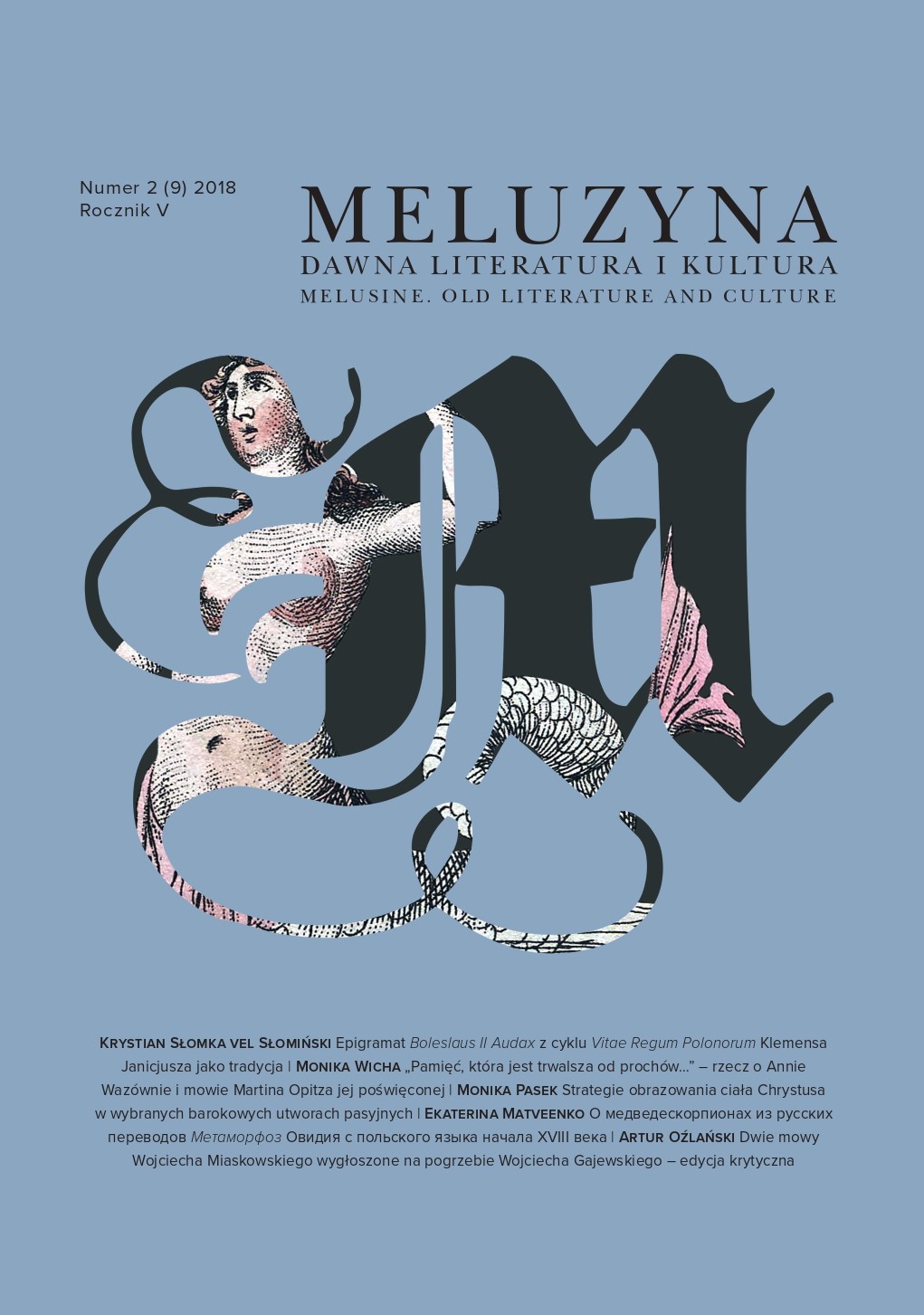Epigramat Boleslaus II Audax z cyklu Vitae Regum Polonorum Klemensa Janicjusza jako tradycja
Epigram “Boleslaus II Audax” from the “Vitae Regum Polonorum” series by Klemens Janicki as the tradition
Author(s): Krystian Słomka vel SłomińskiSubject(s): Language and Literature Studies, Studies of Literature
Published by: Łódzkie Towarzystwo Naukowe
Keywords: epigram; amplification; ratiocinatio; ambivalence; reprimands; invention
Summary/Abstract: In 1563 a series of 12-verse epigrams was issued. It was written by Klemens Janicki and entitled “Vitae Regum Polonorum”. The work features the praises and reprimands of the native sovereigns. Among the criticising poems, one should notice “Boleslaus Secundus Audax”. The first distich of the epigram, portraying the ambivalent nature of Boleslaw the Bold, forms an amplification – it is an example of ratiocinatio, where the readers must decide for themselves which part of the reasoning is being emphasised. The authors of the series referring to “Vitae Regum Polonorum”, namely S. F. Klonowic, J. A. Kmita, M. Paszkowski and J. Bielski, were inspired by the original to a various extend – in some versions the amplification from the 2-verse poem by Janicki changed its nature to incrementum, in others the significance of ratiocinatio was visibly weaker, whereas elsewhere the amplification was not applied at all. It was usually more vivid where the Boleslaw the Bold’s criticism was strongest and the amplification intensity faded out where the criticism was articulated in a more subtle manner.
Journal: Meluzyna: dawna literatura i kultura
- Issue Year: 9/2018
- Issue No: 2
- Page Range: 5-18
- Page Count: 14
- Language: Polish

